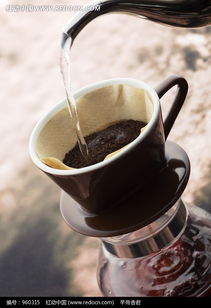The best time to drink coffee and 10 points for attention

Medical research shows that the best time to drink coffee every day is:
03:00 to 05:00 in spring and winter, and 4 to 06:00 in summer and autumn, because this is the most tired time for the human body.
In addition, to enjoy the delicious coffee healthily, you should also pay attention to the following:
1. Drinking more than five cups of coffee a day (about 150cc per cup) can easily lead to addiction and endanger your health.
two。 Drinking coffee in the morning does help to clear your head and refresh yourself, but you must eat breakfast before you drink it, otherwise it is easy to harm the gastrointestinal function. People with gastric ulcers and duodenum should especially avoid drinking coffee on an empty stomach.
3. Do not drink coffee after drinking, otherwise it will stimulate blood vessel dilatation, accelerate blood circulation and increase cardiovascular burden.
4. Drink coffee for about 10 to 15 minutes, that is, it has a refreshing effect, so do not drink coffee before going to bed to avoid insomnia.
5. Don't drink too strong coffee, or it will make people impatient and less understanding. (the heartbeat will also accelerate.)
6. Don't smoke immediately after drinking coffee, otherwise it is easy to do harm to the heart.
7. Take antibiotics and gastric ulcer medication, do not drink coffee at the same time, so as not to stimulate the stomach, causing pain and discomfort.
8. When drinking coffee, it is best to add some cream to ease the stimulation of the taste, but both cream and sugar have calories, so you need to control your intake so as not to get fat.
9. Coffee is currently the longest used but most misunderstood drink by human beverages. Drinking coffee in the right amount can actually be very safe and healthy. Pay attention to getting enough calcium every day and drink 300 milligrams of coffee (about three cups), and every time you drink coffee, it is best to drink coffee at intervals of three to four hours, and you don't have to worry about the sequelae of drinking coffee.
10. The amount of coffee in a cup of brewed coffee does reduce calcium absorption by four milligrams, but it can be made up by two teaspoons of milk. therefore, the decrease in bone density among coffee drinkers is due to insufficient calcium absorption and has nothing to do with drinking coffee itself.
Important Notice :
前街咖啡 FrontStreet Coffee has moved to new addredd:
FrontStreet Coffee Address: 315,Donghua East Road,GuangZhou
Tel:020 38364473
- Prev

The nutritional value of coffee 9 functions of drinking coffee
The caffeine contained in refreshing coffee can stimulate the central nervous system of the brain, prolong the awake time of the brain, make the mind clear, sharp, and more focused, which can improve the efficiency of work and study. A small amount of anti-melancholy coffee can cheer people up, feel happy, and relieve melancholy. Caffeine can increase the rate of calorie consumption by the body, a study
- Next

The best way to brew and drink coffee
Siphon type: grind scale 2-3, start the clock when the next kettle is completely on the top, boil for 90 seconds, stir the upper pot for 2 times, fully mix the coffee powder and water, turn off the heat and let the water flow back to the lower pot, and you can enjoy the sweet coffee. Follicle type: grinding scale 4-5 is better, brew with 95 ℃ water, at the beginning, wait for the coffee powder to absorb enough water, stop for about 10 seconds, and then continue to brew until
Related
- Beginners will see the "Coffee pull flower" guide!
- What is the difference between ice blog purified milk and ordinary milk coffee?
- Why is the Philippines the largest producer of crops in Liberia?
- For coffee extraction, should the fine powder be retained?
- How does extracted espresso fill pressed powder? How much strength does it take to press the powder?
- How to make jasmine cold extract coffee? Is the jasmine + latte good?
- Will this little toy really make the coffee taste better? How does Lily Drip affect coffee extraction?
- Will the action of slapping the filter cup also affect coffee extraction?
- What's the difference between powder-to-water ratio and powder-to-liquid ratio?
- What is the Ethiopian local species? What does it have to do with Heirloom native species?

